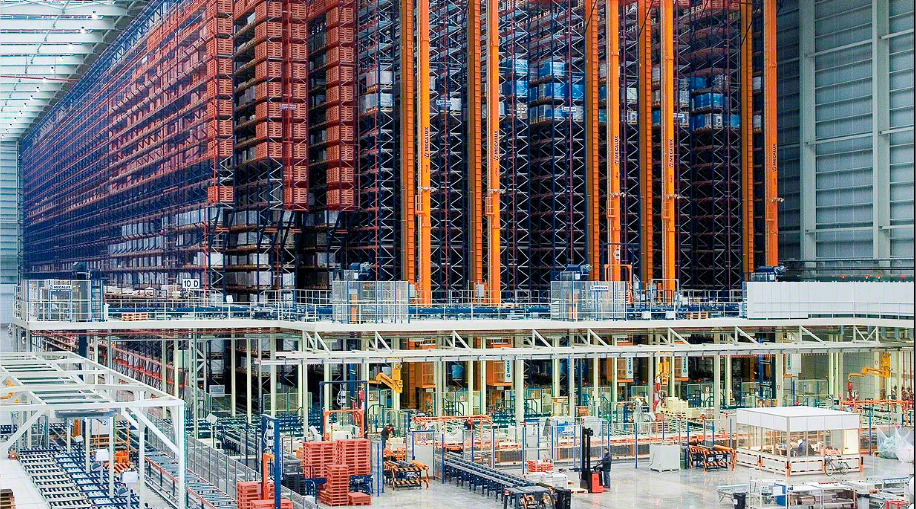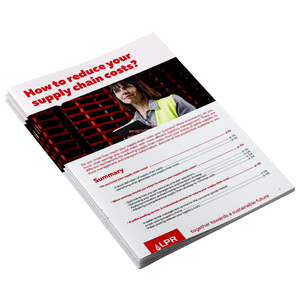When a customer places an order, they are not just buying a product. They also expect reliable and fast service. With this in mind, slow delivery times are detrimental to customer satisfaction. They are unlikely to return if you take too long to deliver !
In addition, delivery times that are slower than those of your competitors can cause you to lose customers and receive negative reviews, which can harm your brand image.
In this article, discover how to reduce delivery times for your company.
Quick Navigation:
I. Why should you reduce delivery times?
II. 8 tips to reduce delivery times
I. Why should you reduce delivery times?
1. To be competitive and to stay that way
Nearly half of European customers buying online abandon their basket if the delivery time is estimated to be longer than 3 days.
For resellers as well as consumers, delivery times are a major factor when choosing a supplier. Competition is strong, especially in e-Commerce. At the same or very similar price, customers tend to choose the cheapest or fastest delivery option.
It is for this reason that the major players in e-Commerce make speed of delivery one of their priorities. Amazon offers delivery within one working day, indeed, there are many brands offering collection within as little as an hour.
By having shorter delivery times than your competitors, you gain an advantage over them!
2. To accelerate the development of your business
Reducing delivery times can give you the opportunity to sell to more customers. It can prove to be a real growth driver for your business.
Conversely, if customers prefer to buy from your competitors, you may find yourself having to sell your products at lower prices to entice customers to use you instead.
Delivery is an integral part of what customers buy. If it is fast enough, it represents strong added value and a real opportunity for growth for the company!
3. To make savings
Reducing your delivery times can allow you to make substantial savings.
Reducing delivery times involves optimising routes and truck loading. Doing this can save fuel and reduce the maintenance costs of your vehicle fleet.
Plus, your storage costs are also likely to reduce too. If your goods flow faster, you will store them for less time!
II. 8 tips to reduce delivery times
1. Optimise routes to reduce delivery times
Reducing delivery times starts with designing your delivery routes more efficiently. Your goal should be to deliver to as many customers as possible in one round.
You can achieve this by using a Transport Management System (TMS) and route planning functionality. This type of software allows you to design shorter and cheaper route plans by avoiding things like tolls and traffic jams.
Improve the fill rate of your vehicles to get the most out of each truck
To reduce back-and-forth trips between your customer warehouses, you should aim for the highest possible loading rate for each of your trucks. Each round must be able to deliver to a maximum number of customers. In this way, you will reduce the time that your trucks spend running empty. A TMS can also help you to optimise your shipments.
To optimise your loads, another solution may be to rethink your pallet and packaging management system. The goal is to reduce the empty space in your trucks.
By using standardised pallets, you can optimise the loading of your vehicles as well as the storage of your products in your warehouses and those of your customers.
Most storage spaces are designed to accommodate Euro pallets. For small quantities, half-pallets are also available. They fit perfectly into a cargo hold and are suitable for small storage spaces.

2. Use direct delivery
Set up direct delivery by allowing your customers to receive their products without going through an intermediary.
This may require additonal projects such as the creation of an e-Commerce site or the implementation of a click and collect system.
By allowing consumers to collect their purchases directly from the store or warehouse, you can significantly reduce the time it takes to make your products available (often to just a few hours!).
To develop projects like these, we recommend that you consult a software development company and/or a transport and logistics consulting firm.
3. Outsource delivery management
When it comes to delivering a product or service, many factors come into play. From packaging and shipping, to tracking and customer service, every business has different needs. This is where outsourcing comes in!
Outsourcing delivery management can help you focus on what matters most to your business, while giving you more time to work on other projects. Here are three reasons why outsourcing delivery management is a good idea:
-
You benefit from the expertise of your service provider: by choosing to outsource your deliveries, you benefit from the experience of a true specialist in the field. Its processes are already optimised to make delivery smoother and faster.
-
You save time: you do not need to assign or develop internal resources (infrastructure, equipment, human resources) to manage and optimise your delivery system. Your service provider takes care of everything, from packing to sending. This represents a saving on maintenance and recruitment / HR.
-
You still benefit from key delivery services: outsourcing does not mean completely handing over control of your delivery to a service provider. You keep an eye on the follow-up of orders and deliveries to relay points, which allows you to adjust the services with your partner as you see fit.
How to choose a delivery management company?
Choosing the right delivery management company can be tricky. To help you, here are some of the factors you should consider when choosing your partner.
-
The size of your business and the type of services you require. You will not necessarily choose the same provider if you make 10 or 1000 deliveries per month. Be sure to choose a service provider who is used to working with delivery volumes close to your needs.
-
The type of product you have to deliver. You might not choose the same delivery management company for all of the different products that you deliver. It is sometimes necessary to choose a service provider who has the capacity to adapt to the dimensions, weight and other characteristics of your product.
-
Finally, remember to ask about cost. There is no point in going through an external delivery manager if it is going to cost you more money. Remember to find out about commissions and the type of billing used.
4. Optimise inventory management to reduce delivery times
Visualise
The first step to reducing delivery times is to visualise what you have.
Carrying out an inventory is therefore a good first step to reducing delivery times.
The more clarity you have on what you own, the more flexibility your business has in terms of how many orders can be fulfilled and how quickly they can be dispatched.
It will also help you avoid situations where you run out of stock because you didn't realise how quickly demand was growing for a certain product or service.
To avoid wasting too much time with manual inventories, which can be slow and painful, we suggest you use inventory management software.
An inventory management tool is an application that helps you track and manage your business inventory. It can be used to track the quantities of each item in stock, as well as the quantity sold. An inventory management tool can also help you recognise which units are low and need restocking, so you know exactly when to order more.
Inventory management tools are often integrated with other business software, such as accounting or point-of-sale systems, saving time across your business.
Organise
Another way to reduce delivery times is to organise your warehouses to optimise order preparation: an organised warehouse is a warehouse where processes are fluid.
-
Pre-pack your products: this drastically reduces order preparation time. Your operators just have to pick up the product and slip it into a box.
-
Use appropriate signage: your employees must not get lost in the warehouse when picking orders. Save time in the preparation of your deliveries by setting up precise signage and ensuring that it is adhered to.
-
Separate items by type and function: As the saying goes, “a place for everything and everything in its place”. This will allow your operators to find their way easily to the correct item.
5. Standardise your order picking processes
To standardise your order preparation processes, the first step is to centralise and standardise all the information related to your orders. This allows operators to gain efficiency in order preparation.
Then you have to equip them accordingly. Many "nomadic" technologies have appeared in warehouses. They allow operators to save considerable time (in their movement within the warehouse or in packing), and therefore your deliveries to be faster. Here are some examples:
-
Connected wristbands
-
Scanner gloves
-
Segways
-
Indoor drones
Finally, a more ambitious project may be able to fully automate order picking in the warehouse. However, this requires the help of an expert in automated logistics systems and a significant investment in robotics.
Automated systems make it possible to save significant time during packing operations: thanks to precise and ergonomic movements, the robots are perfectly capable of carrying out certain repetitive tasks on their own!
LPR pallets are also designed to be perfectly adapted to these automated systems, which makes it possible to streamline the supply chain and reduce delivery times.

6. Deliver a perfect customer experience from A to Z
Reducing delivery times is good, but reducing delivery times while ensuring customer satisfaction is even better!
To do this, remember to prioritise orders according to the delivery method chosen by customers: economical, express, within 24 hours etc... this will allow your operators to prioritise their daily tasks.
Also remember to consider traceability solutions, allowing your customers the ability to follow the status and location of their order (in preparation, dispatched, out for delivery, etc.).
7. Use the best packaging and merchandise support
The right packaging and goods carriers are essential to ensure that your goods can be transported safely. But above all, packaging can also save you valuable time in your deliveries. When choosing a stand or support system, you should consider the following:
-
The stand must be strong enough to support the weight of your goods. Such support must be in line with your fleet of vehicles.
-
If you only have small vans, for example, be sure to choose a suitable support. If your fleet consists of heavy goods vehicles, favour standardised pallets and containers. This will allow you to optimise the space in your trucks, and reduce the number of trips, while at the same time reducing delivery times.
-
Finally, your supports must be easy to load and unload to save you handling time. By choosing standardised supports, you make life easier for your teams and the various stakeholders in your delivery system.
8. Prioritise proximity to your customers to reduce delivery times
Shorter delivery times can be gained by positioning your logistics sites closer to your end customers. If a large portion of them are in a specific region, then it might be worth having storage space locally.
In this case, it is often more cost effective to centralise your storage space and then use multi-client warehouses to further reduce delivery times.
This will allow you to quickly build up inventory at lower cost and with less investment than if you were to build your own facilities.
But before making a decision on storage options, you should consider the following factors:
-
How much space do I need?
If you need a lot of space, it can sometimes be difficult to share a warehouse with other distributors, because you may find you will quickly run out of space.
-
Is this location convenient for my suppliers?
There is no point renting a warehouse just for the sake of renting a warehouse. If it is difficult to access, delivery times will be longer (particularly because of supply problems)
-
Is this investment profitable?
Check that the rental cost is still profitable for your business (cost ratio / reduction in delivery times). Should this not be the case, you might well consider building your own warehouse.
Finally, if you can't find a multi-client warehouse close enough to your customers, or you don't want to build your own, you can always consider renting or buying space from other companies. When renting, make sure the company has shipping experience and that the premises are suitable for your business.
Conclusion
Reducing delivery times is a major challenge for all companies offering deliveries of any kind. Take aways from this article:
1. Reducing delivery costs allows you to remain competitive in your market, accelerate the development of your business, and save money.
2. To reduce delivery times you can:
-
Optimise the routes of your vehicles and improve their fill rate
-
Use direct delivery by eliminating intermediaries
-
Use an external service provider and entrust them with the management of your deliveries
-
Optimise your inventory management by visualising and then organising your warehouses.
-
Standardise your order preparation processes by using connected objects and automation.
-
Offer a perfect customer experience thanks to traceability, to avoid recourse in after-sales service
-
Use standardised packaging, adapted to your goods and your infrastructures.
-
Locate your goods near your customers to reduce journeys and transport times
We hope these tips will help you reduce your delivery times and improve your productivity.
If you would like to discuss your logistics issues with our business experts, you can contact them here. You can also access our other blog articles to learn more about the supply chain and pallet pooling.



